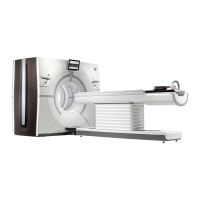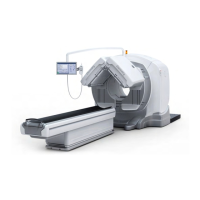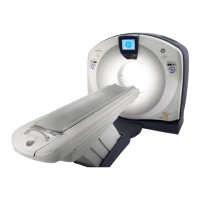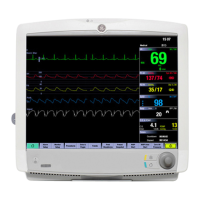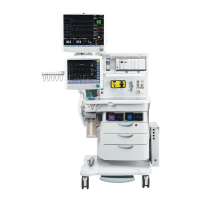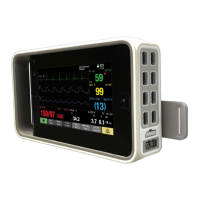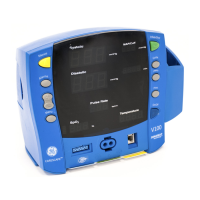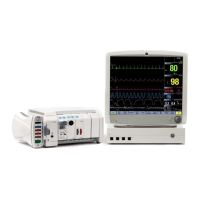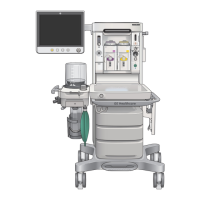GE MEDICAL SYSTEMS CT 9800 QUICK SYSTEM
Rev. 12 Direction 18000
6-9-9
The software program “Detector Alignment” with the three V block tools (46-229269G1) has been discontinued.
The detector is now aligned using polaroid film.
To adjust the detector Z position, loosen the 1/4-20 Hex socket cap screw, then loosen the .75” Hex lock nut.
Now turn the .560 Hex spacer the direction and number of flats indicated. Relock the .75” Hex nut to 20-30 ft.lbs.
and finally tighten the 1/4-20 Hex socket head cap screw to 13 + 1.3 ft.lbs. The adjustment is made to each of
the three mounting supports.
When a detector is replaced, the initial adjustment of Z position should be for a spacing of 0.190” (4.3mm)
between the rear edge of the detector box and the mounting surface in the gantry as shown in Section E-E of
Illustration 6-9-7.
Channel 1 of the detector is used for a Q Cal reference signal. This channel has an adjustable wedge masking
about 50% of the channel as shown in view B of Illustration 6-9-7. The channel intensity and wedge position are
checked in Section 9-12.
To shift the wedge, loosen the locknut 1-1/2 turns while keeping pressure on the spring washer. Move the wedge
by turning the eccentric adjustment. After adjustment, tighten the locknut.
The wedge position should be properly set even on a replacement detector. If it has been loosened and an
adjustment is required, preposition the wedge away from the center of the detector so it partially masks only
channel 1. The wedge will then be moved in while monitoring the intensity of channel 1, relative to channel 2.
9-3 Procedure Outline and Loading Software
Illustration 6-9-8 is a protocol flow diagram of the X-Ray alignment and functional check procedures for a Xenon
detector system.
1. For a system functional check, perform all of the steps listed in Illustration 6-9-8.
2. For a previously aligned system, one or more of the steps may be omitted on checkout following replacement
of the tube, collimator or detector. This assumes that the other two components are not altered.
3. Default scans have been set-up in Data Collection for most X-Ray alignment scans. Refer to Direction
18008; RDCS; Chapter 4, Section 1-2. The default scans have been listed in Illustration 6-9-8.

